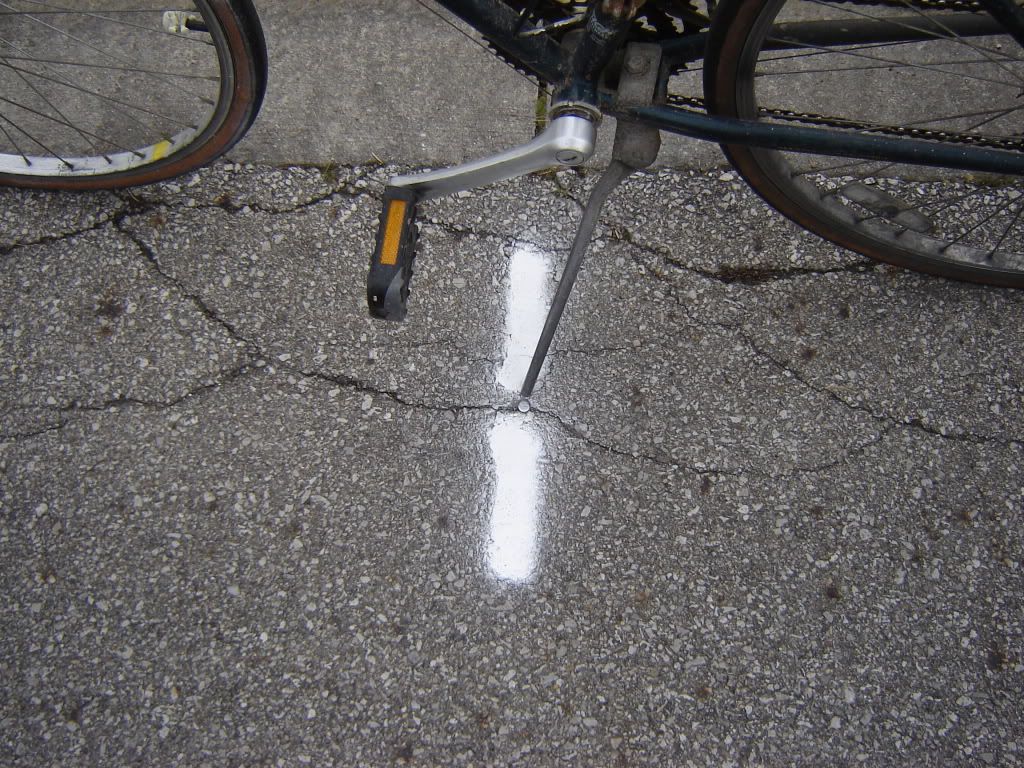
He flipped down his kickstand and put it right on the mark. He does this when calibrating.
With all the years I’ve spent at measuring this was a trick I’d never seen before.

Replies sorted oldest to newest
quote:Originally posted by Bob Thurston:
This conversation reminds me of another gadget I would like to put on my bike-- years ago in Measurement News someone wrote about a clip that keeps your front wheel from turning when you are stopped. Does anyone use one or know where to get one?
quote:Originally posted by Jim Gerweck:
I suppose this is just as accurate, assuming the kickstand always flicks down to the same spot - I wonder how variable that might be.
I don't have kickstands on any of my bikes, so it wouldn't help me, in any case.